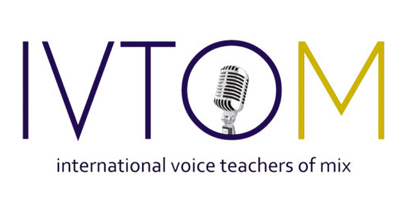Goldilocks and the Three Bears
Goldilocks and the Three Bears: I’m sure many of you are familiar with this children’s story, but have you ever used it in a voice lesson?
I have the great opportunity to teach teens and pre-teens in my studio. Many of them are beginning singers and are still getting to know their voices and all the colors they can make with them. To help them play a little as they are trying to make new sounds, I will often incorporate the story of Goldilocks and the Three Bears.
I tell the story, complete with voicing the different characters. Then I have them repeat a silly phrase from the story, such as, “Somebody ate my porridge!” or “Someone slept in my bed!” We say that phrase in our “papa bear” voice with low pitch, low larynx, thick, and heavy sounds. (I warn them we usually don’t want to use this feeling too much in our singing.) Then we repeat it in our “mama bear” voice that incorporates more of a mixed sound in a medium pitch, using a lighter mechanism, talking forward, keeping good connection. Then we say the phrase again in our “baby bear” voice which is even higher pitched and kind of squeaky. At the end we follow it up with Goldilocks, who for the sake of our story, is very bratty and has lots of attitude. “No way! I didn’t eat your porridge!” For this one we use lots of pharyngeal, nasty, and bratty sounds.
Usually there is some giggling and sometimes hesitation as they try all these different voices. They often feel less pressure using silly voices talking in a character voice than they do trying to sing with a different feeling than they are used to. We have a quick conversation about the qualities of each character’s voice and how it feels in their bodies. I point out how even though they are speaking in different pitches they all feel “straight out” and they are not chasing the pitch up and down. I try to give them lots of freedom in making these sounds and point out how the story becomes more alive and more fun as they use these different voices and colors.
Lastly, we put it into some exercises. As we are ascending in pitch and if they are “holding on” too much, I’m amazed how quickly they can find more of a balance when I remind them to use a little more “mama bear” in their sound. If they are “letting go” too much, I remind them to use a little more “baby bear” or “Goldilocks” to remind them what that forward feeling with a more cord closure feels like. Having already played around with those sounds and feelings in their bodies they are often able to find those physical feelings that are helpful, more balanced, and apply those same feelings in their singing.
This usually takes only a few minutes, but the skills of being brave to try new sounds, playing with their voices to have fun, and becoming aware of how those contrasts feel in their bodies often give us a helpful foundation as we explore many of those same things in our singing.
 Carli is a voice teacher, performer, conductor, clinician, and has a passion for helping each singer to find their unique voice. She specializes in teaching Mix singing technique that focuses on vocal balance and health that can be adapted to any musical style, such as Musical Theater, Classical, Pop, R&B, or Jazz. She continues her education by seeking out the world’s best vocal teachers, vocal scientists, and performance psychologists to become the best teacher she can to help the entire singer.
Carli is a voice teacher, performer, conductor, clinician, and has a passion for helping each singer to find their unique voice. She specializes in teaching Mix singing technique that focuses on vocal balance and health that can be adapted to any musical style, such as Musical Theater, Classical, Pop, R&B, or Jazz. She continues her education by seeking out the world’s best vocal teachers, vocal scientists, and performance psychologists to become the best teacher she can to help the entire singer.
Carli has a BM in choral music education from Brigham Young University and is an accredited Mix teacher with International Voice Teachers of Mix (IVTOM). She taught choir and music appreciation in high school and middle school for 5 years and has taught private voice lessons for over 15 years. For over a decade, she has been a co-director and performer of Take Note Singers. Carli is also sought after to work with school and church choirs as well as coach musical casts. Her vocal students have sung in high school All-State choirs, performed in lead musical roles, won vocal competitions, been accepted into excellent college programs, and developed confidence in their singing and performing ability.
Professional Organizations: Certified Mix teacher and area coordinator with International Voice Teachers of Mix (IVTOM) and member of National Association of Teachers of Singing (NATS). Completing certification as a “Peak Performer” coach with performance psychologist, Jon Skidmore.

